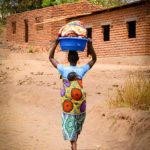Empowerment is the expansion of people’s capacity to make and act upon decisions affecting all aspects of their lives—including decisions related to health—by proactively addressing socioeconomic, and other power inequalities in a context where this ability was previously denied.
Programmatic interventions often focus specifically on empowering women, because of the inequalities in their socioeconomic status. Women’s empowerment focuses on improving the status of women and girls so that they acquire the power to act freely, exercise their rights, and fulfill their potential as full and equal members of society. While empowerment often comes from within, and individuals empower themselves, cultures, societies, and institutions create conditions that facilitate or undermine the possibilities for empowerment.
An example of a women’s empowerment project is the IMAGE project from South Africa. IMAGE provided women with a micro-finance program and a training program on gender awareness, leadership, and HIV. This approach resulted in a number of outcomes related to gender equality, including women’s greater access to economic resources, increased self-confidence, and increased autonomy and decision-making. Health outcomes included a reduction of intimate partner and sexual violence by half.
Source: Kim et al., 2007; Rottach et al., 2009; USAID, 2012.
Gender equitable men’s engagement is a programmatic approach that involves men and boys
-
- as clients and beneficiaries,
- as partners, and
- as agents of change
in actively promoting gender equality, women’s empowerment and the transformation of inequitable definitions of masculinity. In the health context, this comprises engaging men and boys in addressing their own, and supporting their partners’ reproductive, sexual and other health needs.
Men’s engagement also includes broader efforts to promote equality with respect to caregiving, fatherhood, and division of labor, and ending gender-based violence. These approaches involve men in actively promoting gender equity; increase men’s support for women’s reproductive health and children’s well-being; and advance the reproductive health of both men and women.
A classic example of a men’s engagement project is Program H in Brazil, which used participatory group education and a social marketing campaign, both targeting young men to promote awareness of gender roles, inequality, rights, and health. Program H resulted in reductions in men’s risk behaviors and STI symptoms, as well as self-reported increases in gender-equitable attitudes. It has been named a best practice in promoting gender equality and preventing gender-based violence by the World Bank and the World Health Organization and has been cited by UNICEF and the United Nations for its effectiveness. It is now used in more than 22 countries.
Finally, while working in single sex groups can be strategic, program designers should consider working with both women and men together to maximize the potential for greater equality.
Source: IGWG, 2013; Pulerwitz et al., 2006; and Rottach et al., 2009.
Gender-synchronized approaches are the intentional intersection of gender transformative efforts reaching both men and boys and women and girls of all sexual orientations and gender identities. They engage people to challenge harmful and restrictive constructions of masculinity and femininity that drive gender-related vulnerabilities and inequalities and hinder health and well-being.
An example of a project that was gender-synchronized is Stepping Stones, which originated in South Africa but has been replicated around the world. Stepping Stones uses a series of 18 workshops with each of four groups of older men, older women, younger men, and younger women, sometimes separate, sometimes together.
At the end, the groups come together and the entire community entertains “requests for change” as the groups perform dramas reflecting the lessons learned. An evaluation of the program in South Africa found reductions of new HIV and herpes infections among female participants, although those findings were not statistically significant.
The evaluation found increased couple communication, increased awareness of violence against women as wrong, and reduced intimate partner violence.
Source: Jewkes et al., 2008; IGWG, 2009; Greene and Levack, 2010.
These materials were adapted from the Global Health eLearning Center, U.S. Agency for International Development.


